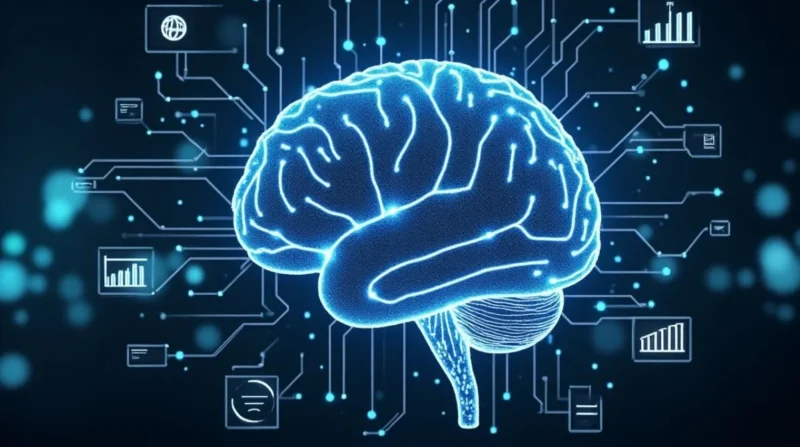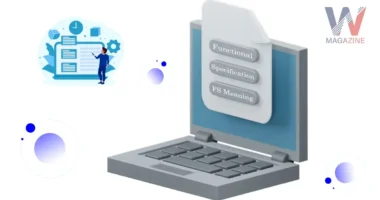Table of Contents
- What is CÑIMS?
- What Does CÑIMS Stand For?
- The Importance of Context in Digital Communication
- Key Components of CÑIMS
- How CÑIMS Enhances Data Processing?
- Streamlined Data Ingestion
- Advanced Pattern Recognition
- Contextual Data Interpretation
- Applications of CÑIMS Across Industries
- Difficulties in Putting Cñims into Practice and Overcoming Obstacles
- Emerging Trends and Innovations in CIM
- The Future of CÑIMS
- FAQ
- Conclusion
In the ever-evolving landscape of data science and artificial intelligence, a groundbreaking system has emerged to transform the way industries handle complex information processing and predictive modeling. CÑIMS, which stands for Cognitive Neural Integration Management System, represents a significant leap forward in enhancing data processing capabilities and predictive analytics across various sectors.
What is CÑIMS?
CÑIMS is an advanced computational framework designed to streamline and optimize the integration of cognitive computing principles with neural network architectures. At its core, CÑIMS aims to bridge the gap between human-like reasoning and machine learning efficiency, creating a symbiotic system that leverages the strengths of both approaches.
What Does CÑIMS Stand For?
CÑIMS is an acronym that stands for Cognitive Neural Integration Management System. This advanced computational framework is designed to streamline and optimize the integration of cognitive computing principles with neural network architectures. At its core, CÑIMS aims to bridge the gap between human-like reasoning and machine learning efficiency, creating a symbiotic system that leverages the strengths of both approaches.
The Importance of Context in Digital Communication
In today’s digital world, context is very important when we talk or share messages online. Whether it’s through text messages, social media, or email, a lot can be misunderstood if the message isn’t clear or doesn’t have enough background information. Most of us have probably had a moment where someone misread what we meant because they didn’t fully understand the situation or tone.
1. Language and Communication
Sometimes, we create or use new words or symbols in our online chats. For example, let’s say someone starts using a made-up word like “cñims.” Creating or adopting new terms like this can be fun and even useful. It gives us a chance to be creative and to communicate in unique ways.
But while we’re being creative, it’s also very important to keep our communication clear and easy to understand. Whether we’re using technical terms, slang, or new words, we should make sure everyone we’re talking to can follow along. If not, it’s easy for confusion to happen. So, we should always try to explain what we mean and use plain language when possible, especially when we’re not sure if the other person knows the term.
2. Decoding Symbols and Acronyms
In digital conversations, we often use emojis, short forms (like “LOL” for laugh out loud), and new internet phrases. This has changed the way we communicate online. These symbols and shortcuts make our chats faster and sometimes more fun, but they can also make it harder to understand what someone really means if we’re not familiar with them.
Key Components of CÑIMS
- Cognitive Processing Units (CPUs): Specialized modules designed to mimic human cognitive functions.
- Neural Network Integration Layer: A sophisticated interface that connects traditional neural networks with cognitive processing units.
- Data Harmonization Engine: A system for standardizing and reconciling diverse data inputs.
- Predictive Analytics Suite: Advanced tools for forecasting and trend analysis.
- Adaptive Learning Mechanisms: Systems that allow CÑIMS to improve its performance over time.
How CÑIMS Enhances Data Processing?
CÑIMS revolutionizes data processing by introducing a multi-faceted approach that combines the best aspects of cognitive computing and neural networks. This synergy allows for more nuanced and context-aware data interpretation, leading to improved insights and decision-making capabilities.
Streamlined Data Ingestion
One of the primary advantages of CÑIMS is its ability to efficiently ingest and process vast amounts of data from disparate sources. The system’s Data Harmonization Engine plays a crucial role in this process:
- Data Standardization: Automatically converts various data formats into a unified structure.
- Semantic Analysis: Interprets the meaning and context of incoming data.
- Anomaly Detection: Identifies and flags unusual patterns or outliers in real-time.
- Data Enrichment: Augments incoming data with relevant contextual information.
Advanced Pattern Recognition
CÑIMS excels in identifying complex patterns within datasets that might elude traditional analysis methods. By combining cognitive processing with neural network capabilities, the system can:
- Detect subtle correlations across multiple variables.
- Recognize temporal patterns and cyclical trends.
- Identify causal relationships between seemingly unrelated data points.
- Adapt to evolving patterns in dynamic datasets.
Contextual Data Interpretation
Unlike conventional data processing systems, CÑIMS possesses the ability to interpret data within its broader context. This contextual awareness is achieved through:
- Semantic Layering: Understanding the underlying meaning behind data points.
- Temporal Awareness: Recognizing the significance of data changes over time.
- Situational Awareness: Considering external factors that may influence data interpretation.
Applications of CÑIMS Across Industries
CÑIMS has the potential to revolutionize various industries by providing advanced data processing and predictive analytics capabilities.
Healthcare
In healthcare, CÑIMS can analyze patient data to predict disease outbreaks, recommend personalized treatment plans, and optimize resource allocation. Its ability to process vast amounts of medical data enables healthcare providers to make informed decisions that improve patient outcomes.
Finance
Financial institutions can leverage CÑIMS to detect fraudulent activities, assess credit risks, and forecast market trends. By analyzing historical data and identifying patterns, CÑIMS helps in making strategic investment decisions and managing financial risks effectively.
Retail
Retailers can utilize CÑIMS to personalize customer experiences, optimize inventory management, and predict consumer behavior. By analyzing purchasing patterns and customer preferences, CÑIMS enables retailers to tailor their offerings and improve customer satisfaction.
Manufacturing
In manufacturing, CÑIMS can predict equipment failures, optimize production schedules, and improve supply chain management. Its ability to analyze real-time data from sensors and machines helps in reducing downtime and enhancing operational efficiency.
Automotive Industry
In the automotive sector, CIM facilitates the integration of design, engineering, and manufacturing processes. This integration allows for real-time monitoring and control of production lines, leading to improved product quality and reduced time-to-market. For instance, companies like Siemens utilize CIM to optimize assembly lines and manage complex supply chains efficiently.
Aerospace Industry
The aerospace industry benefits from CIM by enabling precise manufacturing of complex components. Through the use of digital twins and simulation tools, manufacturers can predict and mitigate potential issues before physical production, ensuring higher safety standards and compliance with stringent regulations.
Electronics Manufacturing
CIM systems in electronics manufacturing allow for the seamless integration of various processes, from circuit design to final assembly. This integration enhances flexibility, allowing manufacturers to quickly adapt to design changes and market demands, while maintaining high-quality standards.
Textile and Fashion Industry
In the textile and fashion industry, CIM enables the automation of design and production processes. This automation allows for rapid prototyping and customization, meeting the fast-paced demands of fashion trends while reducing waste and production costs.
Logistics and Warehousing
In logistics and warehousing, CIM systems optimize storage solutions by efficiently managing space, tracking inventory levels, and reducing excess stock. This optimization leads to faster order fulfillment and reduced operational costs.
Difficulties in Putting Cñims into Practice and Overcoming Obstacles
Implementing claims processes effectively is a complex endeavor, fraught with various challenges that can impede efficiency, accuracy, and customer satisfaction. Below, we explore the common difficulties encountered in putting claims into practice and provide strategies to overcome these obstacles.
Common Challenges in Implementing Claims Processes
1. High Volume and Complexity of Claims
Organizations often deal with a large number of claims, many of which are complex and multifaceted. This complexity requires specialized knowledge and can overwhelm existing systems, leading to delays and errors.
2. Legal and Regulatory Compliance
Navigating the intricate web of legal and regulatory requirements is a significant challenge. Non-compliance can result in legal penalties, financial losses, and reputational damage.
3. Budget Constraints
Limited financial resources can hinder the adoption of advanced claims management systems and the hiring of skilled personnel, affecting the overall efficiency of the claims process.
4. Public Scrutiny and Transparency
Public entities, in particular, are subject to intense scrutiny. Any mishandling of claims can lead to public outcry and loss of trust.
5. Outdated Technology
Reliance on legacy systems can impede the processing of modern, complex claims, leading to inefficiencies and increased error rates.
Strategies to Overcome Claims Processing Challenges
1. Implement Advanced Technology Solutions
Adopting modern core technology integrated with AI can streamline the management of high volumes of claims. AI-powered systems can automatically categorize and prioritize claims, reducing manual workload and improving accuracy.
2. Enhance Legal and Regulatory Compliance
Utilizing AI and analytics tools can help organizations navigate complex legal environments by automating compliance checks and ensuring adherence to applicable laws and regulations.
3. Address Budget Constraints Through Automation
While initial investments in technology may be significant, the long-term cost savings from automation and improved efficiency can offset these expenses.
4. Improve Transparency and Public Trust
Implementing transparent processes and utilizing technology to provide real-time updates can enhance public trust and accountability.
5. Upgrade Technological Infrastructure
Transitioning from outdated systems to modern platforms can improve the handling of complex claims and reduce processing times
Emerging Trends and Innovations in CIM
1. Artificial Intelligence (AI) and Machine Learning (ML) Integration
AI and ML are becoming integral to CIM systems, enabling predictive maintenance, real-time quality control, and intelligent scheduling. For instance, Siemens has implemented AI-powered inspection systems that have reduced inspection efforts by 50% and increased first-pass yield by 15%.
2. Digital Twin Technology
Digital twins, virtual replicas of physical assets, are revolutionizing manufacturing by allowing real-time monitoring and simulation of production processes. Companies like Schaeffler have utilized digital twins to enhance operational efficiency by up to 80%.
3. Smart Factories and Industrial Internet of Things (IIoT)
The integration of IIoT devices in manufacturing equipment facilitates continuous monitoring and data collection, leading to improved decision-making and reduced downtime. Smart factories leverage this data to optimize production processes and enhance product quality.
4. Additive Manufacturing (3D Printing)
3D printing is enabling rapid prototyping and the production of complex, customized components with minimal material waste. BMW, for example, produced over 300,000 parts using additive manufacturing in 2023, showcasing its potential for flexibility and innovation.
5. Sustainable Manufacturing Practices
There is a growing emphasis on sustainability within CIM, with manufacturers adopting energy-efficient processes and aiming for carbon neutrality. The focus is on reducing waste and optimizing energy usage to meet environmental goals.
The Future of CÑIMS
As technology continues to advance, the capabilities of CÑIMS are expected to expand further. Future developments may include:
- Integration with Quantum Computing: Enhancing processing power and speed.
- Advanced Natural Language Processing: Improving human-machine interactions.
- Autonomous Decision-Making: Enabling systems to make complex decisions without human intervention.
FAQ
Q1. What does CÑIMS stand for?
It stands for Cognitive Neural Integration Management System.
Q2. How does CÑIMS enhance data processing?
CÑIMS combines cognitive computing and neural networks to provide context-aware data interpretation and advanced pattern recognition.
Q3. In which industries can CÑIMS be applied?
CÑIMS can be applied in healthcare, finance, retail, manufacturing, and other industries requiring advanced data analytics.
Q4. What are the future prospects of CÑIMS?
Future developments may include integration with quantum computing, advanced natural language processing, and autonomous decision-making capabilities.
Conclusion
CÑIMS represents a significant advancement in the field of data processing and predictive analytics. By integrating cognitive computing with neural network architectures, it offers a powerful tool for industries seeking to harness the full potential of their data. As technology continues to evolve, CÑIMS is poised to play a pivotal role in shaping the future of data-driven decision-making.
Related Topic: Bonjixkiz: Innovating Tech with User-Centered Design









